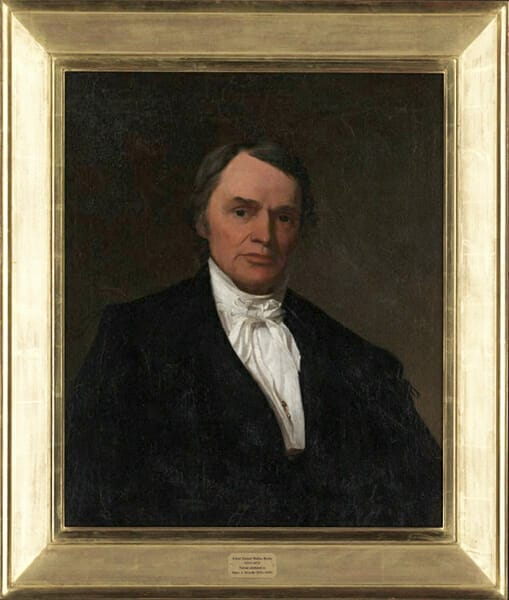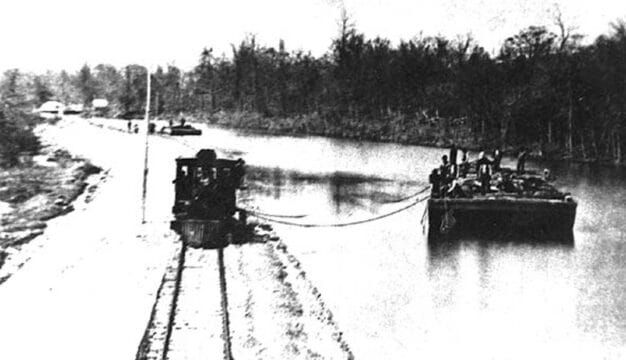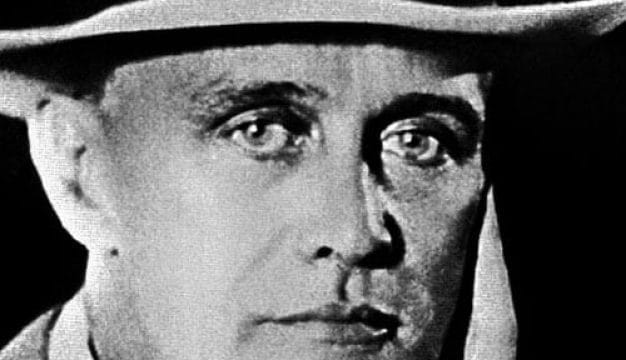Robert Baylor
 Robert Baylor
Robert Emmett Bledsoe (R. E. B.) Baylor (1793-1874) was a lawyer and politician who represented Alabama for one term in the U.S. Congress. He is much better known as the principal founder of Baylor University in Waco, Texas, and as a member of the Supreme Court of the Republic of Texas from 1841 to 1846. He was influential in moving Texas from an independent republic to statehood.
Robert Baylor
Robert Emmett Bledsoe (R. E. B.) Baylor (1793-1874) was a lawyer and politician who represented Alabama for one term in the U.S. Congress. He is much better known as the principal founder of Baylor University in Waco, Texas, and as a member of the Supreme Court of the Republic of Texas from 1841 to 1846. He was influential in moving Texas from an independent republic to statehood.
Baylor was born on May 10, 1793, in Lincoln County, Kentucky, to Walker and Jane (Bledsoe) Baylor; he was one of six children. For most of his young life, he was regaled with stories of his father’s exploits as a member of the 3rd Light Dragoons and, later, as a member of Gen. George Washington’s staff during the American Revolution. A promising student, he attended school in Paris, Kentucky, and was admitted to the state bar in 1812. When war erupted between the United States and Great Britain that same year, Baylor decided to follow in his father’s footsteps by joining the Kentucky militia, serving in the Ohio Territory and present-day Canada during the War of 1812.
With the cessation of hostilities in 1814, Baylor returned to Kentucky, where he studied law under his uncle, local magistrate Judge Jesse Bledsoe. He soon built his own successful law practice and was elected to the Kentucky legislature in 1819, winning the same seat that his brother George had held the previous year. He resigned his position in 1820, however, and moved to the newly created state of Alabama, joining a frenzy of in-migration known as “Alabama Fever.” He settled in Tuscaloosa, Tuscaloosa County, and built another successful practice. In 1824, he reentered politics and was elected to the Alabama House of Representatives and won reelection the following year.
Though he lost his bid for reelection in 1827, Baylor was elected just one year later to represent Alabama’s Second Congressional District in the Twenty-First Congress as a Jacksonian Democrat. In Washington, D.C., he befriended Tennessee representative Davy Crockett, Kentucky statesman Henry Clay, Massachusetts senator Daniel Webster, then-vice president John C. Calhoun of South Carolina, and Kentucky representative Thomas Chilton. His association with Crockett, Chilton, and Clay in particular harmed his political career, as they were known as staunch opponents of Pres. Andrew Jackson, who was popular in Alabama. As a result, voters in Alabama rebuffed his bids for reelection in 1830, 1835, and 1837. While living in Dallas County in 1836, he raised a regiment of Alabama volunteers to fight against Creek Indians during the Second Creek War. Following his electoral defeat in 1837, Baylor moved to Mobile, Mobile County, where he became a prominent local attorney, filing claims on the behalf of citizens against failing banks during the Panic of 1837.
In 1839, Baylor moved to Talladega, Talladega County, where he lived with his cousin Thomas Chilton, a Baptist minister. After attending one of Chilton’s revival meetings in 1839, Baylor, who was an agnostic with some interest in Christianity, converted fully to the faith and was soon ordained as a Baptist minister. That same year, he moved to Gay Hill, Texas, where he organized a local school and several small churches. Involved in a number of religious organizations, he helped organize the Union Baptist Association in 1840 and the Texas Baptist Education Society in 1841. On January 7, 1841, he was elected judge of the Third Judicial District of the congress of the Republic of Texas and by virtue of his district judgeship was an associate justice of the Supreme Court of the Republic until its demise in 1846.
In 1844, Baylor and the Texas Baptist Education Society began work to establish a Baptist-affiliated university in Texas. Along with fellow Baptists William M. Tryon and J. G. Thomas, Baylor petitioned the Congress of the Republic of Texas for the creation of the new university in the town of Independence. Before the final vote of Congress on the issue, it was decided that the new university would be named after Baylor. On February 1, 1845, Anson Jones, the president of the republic, signed the act that officially chartered Baylor University. Baylor was made a charter trustee of the new institution and would eventually become a professor of law.
As the Republic of Texas moved towards statehood in the summer of 1845, a convention was called to develop a state constitution; one of the admission requirements for joining the United States. Baylor served on the Annexation, Judiciary, and General Provisions committees of the convention and used his positions to push for free public schools and homestead exemptions that protected homeowners from forced sales to pay off creditors in the case of financial hardship. In 1846, the state’s first governor, James Pinckney Henderson, appointed Baylor as judge of the Third Judicial District, and he served until 1863. In the aftermath of the Civil War, the female department of Baylor University (which taught female students exclusively) separated and became known as the Baylor Female College (now the University of Mary Hardin-Baylor). Baylor was a trustee of both institutions and in this capacity shaped the educational system in Texas for decades to come.
Baylor died on January 6, 1874, in Gay Hill, Texas. At his request, his body was interred on the campus of Baylor. In 1886, the university merged with nearby Waco University and relocated to its present home in Waco, Texas. In 1917, Baylor’s remains were disinterred and moved to the grounds of the University of Mary Hardin-Baylor.
Further Reading
- Baker, Eugene W. In His Traces: The Life and Times of R.E.B. Baylor. Waco, Tex.: Baylor University Press, 2012.
- R. E. B. Baylor Papers, Texas Collection, Baylor University, Waco, Texas.
- Wilhite-McCartney, Patricia. Lawyers with Legacies: Inspired Counsel. Mustang, Okla.: Tate Publishing & Enterprises, 2007.



